Turn any article into a podcast. Upgrade now to start listening.
Premium Members can share articles with friends & family to bypass the paywall.
You’re reading the free version of The Morning Dispatch. Consider joining as a paid member to get full access to our news, analysis, community comments, and live events.
Happy Monday! In a social media post on Sunday morning, Pope Leo wrote, “In our competitive society, where it seems that only the strong and winners deserve to live, sport also teaches us how to lose. It forces us, in learning the art of losing, to confront our fragility, our limitations and our imperfections. It is through the experience of these limits that we open our hearts to hope. Athletes who never make mistakes, who never lose, do not exist.”
Yeah, he’s a White Sox fan, alright.
Quick Hits: Today’s Top Stories
- Israel and Iran continued trading attacks over the weekend and into Monday, as President Donald Trump urged the two countries to “make a deal.” Israeli Prime Minister Benjamin Netanyahu said that Islamic Revolutionary Guard Corps intelligence chief Mohammed Kazemi was among the Iranian leaders whom Israeli forces killed on Sunday, and the Israel Defense Forces issued evacuation warnings to Tehran residents on Sunday in areas near weapons factories, several hours before launching an air strike there. Meanwhile, Israeli officials have reported that Iranian aerial attacks on residential areas across Israel have killed at least 24 people thus far, many of whom were not in bomb shelters at the time. On Sunday, the U.K.-based Syrian Observatory for Human Rights reported that a Syrian civilian was also killed after a drone, likely launched by Iran, fell on her home.
- Meanwhile, several news outlets reported on Sunday that Israel had an opportunity to kill Iranian Supreme Leader Ali Khamenei, per unnamed U.S. officials, but that Trump had urged Netanyahu not to move forward with the operation when he was informed of it. Israeli officials have pushed back on the account, with Netanyahu telling Fox News’ Bret Baier, “There are a lot of false reports about conversations that didn’t take place, but I don’t want to get into that.” Meanwhile, Reuters reported on Sunday that Iranian officials informed mediators from Oman and Qatar that they are not interested in ceasefire negotiations while attacks continue.
- Minnesota state Rep. Melissa Hortman, the former Democratic state House speaker, and her husband, Mark, were murdered in their home on Saturday by a gunman posing as law enforcement. The same assailant shot and injured Minnesota state Sen. John Hoffman, also a Democrat, and his wife, Yvette. Police apprehended the 57-year-old suspect on Sunday night following a two-day manhunt, charging him with two counts of second-degree murder and two counts of second-degree attempted murder. In a police vehicle left behind by the attacker, authorities found a hit list with more than 70 names of potential targets, including other Democratic politicians, pro-choice advocates, and the locations of Planned Parenthood and health care centers. The suspect was twice appointed to the Minnesota Workforce Development Board by two different state governors, serving from 2016 to 2023. Hoffman also served on the board, though Minnesota investigators have not yet determined whether the two knew each other.
- President Trump said Russian President Vladimir Putin called him Saturday morning “to very nicely wish me a Happy Birthday, but to more importantly, talk about Iran.” Trump said the two spoke very little about Russia’s war against Ukraine—“that will be for next week”—but that they agreed the fighting between Israel and Iran should end. Meanwhile, Russia and Ukraine swapped prisoners of war—mostly those injured or younger than 25 years old—but Russian officials accused Ukraine of violating the deal by not exchanging the bodies of deceased soldiers. Moscow has previously accused Kyiv of violating the deal’s terms, which Ukrainian President Volodymyr Zelensky called a “dirty political and information game.”
- A former Syrian senior security official, Maj. Gen. Bassam al-Hassan, told federal agents with the FBI and CIA in recent weeks that Austin Tice—a journalist and former U.S. Marine who went missing in August 2012 while reporting in Syria—had been executed in 2013 at the orders of the since-deposed Syrian President Bashar al-Assad, several news outlets reported. Al-Hassan reportedly informed federal officials of possible locations where Tice’s body could be buried. Responding to Al Hassan’s statements, Tice’s family wrote that they believe “this version of events is false.” U.S. officials have said as recently as December 2024 that they believed Tice to be alive.
- The Trump administration ordered Immigration and Customs Enforcement (ICE) officers on Friday to stop conducting raids and arrests on most farms, restaurants, and hotels, and aquaculture or meatpacking plants, several news outlets reported. The decision reportedly came directly from the president. “Our great Farmers and people in the Hotel and Leisure business have been stating that our very aggressive policy on immigration is taking very good, long time workers away from them, with those jobs being almost impossible to replace,” Trump wrote on social media last week, hinting at the forthcoming policy change. Meanwhile, Department of Homeland Security spokeswoman Tricia McLaughlin said ICE would continue to target the “worst criminal illegal aliens” residing in the United States.
- A 39-year-old man was shot on Saturday at a “No Kings” protest in Salt Lake City, Utah, and later died from his injuries. Police have detained a 24-year-old suspect and two others connected to the shooting. According to the Salt Lake City police department, the 24-year-old man was wearing a black mask and running toward a crowd with an AR-15-style rifle when a nearby peacekeeper fired three rounds at him, one of which struck an innocent bystander who was not the shooter’s “intended target.”* They added that there were no other reported disturbances at the city’s “No Kings” protests—described by its organizers as “a mass, nationwide protest rejecting authoritarianism, billionaire-first politics, and the militarization of our democracy”—on Saturday. Meanwhile, police in Culpepper County, Virginia, arrested and charged a 21-year-old man with reckless driving on Saturday after he allegedly “intentionally” drove his SUV into a “No Kings” protest crowd, striking at least one person, though no injuries were reported.
- Also on Saturday, Los Angeles police issued dispersal orders in areas near a federal building located downtown, stating that some people in the crowd were “throwing rocks, bricks, bottles and other objects.” Law enforcement officials added that “less lethal [force] has been approved,” warning people to leave the area and later deploying smoke and flash-bangs to clear the area. In response, protesters accused the police of escalating the situation. Later, police said “commercial grade fireworks” had been thrown at officers.
🎉 You're Invited to a Night of Celebration and Inspiration! 🎉

A Mideast War Enters Day Four

At 10 p.m. Tehran time on Friday, Supreme Leader Ali Khamenei declared war on Israel as Iran’s opening missile salvo rained down on Tel Aviv and Jerusalem. “The Zionist regime made a grave mistake,” he said in a televised address. “Life will become bitter for them, without a doubt. They should not think they struck and it’s over—no. They started this and triggered a war. We will not allow them to walk away unscathed from the great crime they have committed.”
That initial attack, which came in response to Israel’s operation targeting Iran’s military and nuclear infrastructure on Friday, killed one person and injured 20. And Tehran continued launching devastating barrages through the weekend and into Monday, hitting civilian centers in an effort to exhaust Israel’s supply of interceptors and wear down the resolve of its people. But analysts say there’s a limit to how long the Islamic Republic can continue to fire on Israel as its ballistic missile stockpiles are depleted or destroyed. Meanwhile, Israeli strikes on nuclear facilities, oil fields, military bases, and other targets across Iran continue.
As a non-paying reader, you are receiving a truncated version of The Morning Dispatch. You can read our full item on the latest out of the Middle East in the members-only version of TMD.
At the time of publishing, Iran’s missile attacks on Israel since Friday have left at least 24 people dead, according to Israeli officials, and more than 500 injured. The volleys have largely centered on densely populated areas rather than strategic targets, in some cases bringing down entire apartment buildings. On Saturday night, for example, a missile struck an Arab city east of Haifa, killing four women in the same family. Early Sunday morning, a direct hit to a residential building in the central city of Bat Yam killed at least nine people, including three children. Two additional barrages on Sunday night and early Monday morning reportedly killed eight others. Senior Israeli officials estimate that between 10 and 15 percent of missiles have broken through the country’s air defenses, despite U.S. participation in tracking and intercepting the incoming attacks
But Israel’s surprise attack late last week appears to have blunted at least some of Iran’s initial response. According to a report by the New York Times, Iran initially planned to launch as many as 1,000 ballistic missiles at Israel in the event that war broke out. But Jerusalem’s opening wave of attacks targeted not only Iranian missiles but also the military officials responsible for ordering their use. By the time Tehran launched its first missile attack some 17 hours later, it was able to fire just 100 missiles. Early Monday morning, an Israel Defense Forces spokesman claimed the Israeli Air Force had destroyed one-third of Iran’s ballistic missile launchers and established “full aerial superiority” over the Iranian capital of Tehran.
Israel continued its strikes against Iranian military targets over the weekend, while also setting its sights on the country’s energy assets. The Shahran oil depot outside of Tehran, two natural gas refineries in Bushehr, and an oil refinery in Shahr Rey—one of Iran’s largest—were all reportedly targeted, causing oil prices to climb. Israeli warplanes also hit symbols of the Iranian regime, including Tehran’s police headquarters, the Ministry of Intelligence, and the foreign ministry headquarters.
Israeli attacks on Iran’s nuclear sites have also continued, but there may be limits to the damage Jerusalem can inflict. Israeli forces reportedly struck Iran’s Fordow nuclear site overnight, for example, but satellite imagery showed only limited damage to the enrichment plant built into the side of a mountain. “The bad news is that there are still centrifuges enriching. The bad news is that there’s still a large highly enriched uranium stockpile. The bad news is that Fordow, the heavily fortified fuel enrichment plant under almost 300 feet of rock in central Iran, is still intact,” Behnam Ben Taleblu, the senior director of the Foundation for Defense of Democracies’ Iran Program, told TMD. “While the Israelis have been very militarily successful, there is still a lingering question mark over the counter-proliferation operation that triggered this whole thing.”
Meanwhile, Israel has largely refrained from targeting the Islamic Republic’s senior political leaders, though officials have indicated that it’s not entirely off the table. Asked by ABC News on Sunday whether Jerusalem would go after Khamenei, Israeli Ambassador to the U.S. Yechiel Leiter demurred. “I think it’s fair to say that nobody who is threatening the destruction of Israel should be off the target list,” he said, “but we’re not going to discuss specific individuals.” According to multiple reports this weekend, however, Israel had the opportunity to target Khamenei—but didn’t after President Donald Trump made clear that he opposed the move.
Since Friday, the U.S. president has alternately applauded the Israeli offensive and called for an end to the war. “I think it’s time for a deal,” Trump told reporters on Sunday. “But sometimes they have to fight it out, but we’re going to see what happens.”
Iranian officials, meanwhile, have sought to leverage American fear of escalation to indirectly pressure Israel to end the war. Tehran has threatened to block the Strait of Hormuz, a vital choke point for the world’s oil and gas supply, and it has also vowed to attack U.S. and European bases in the region should they help defend Israel.
But as long as the fighting continues, the Islamic Republic has more to lose than just its nuclear program. “The regime excels at crisis management and crisis escalation, but once that tips over into outright war, and particularly conventional war, that is not a strong suit for the regime,” Ben Taleblu said. “We are watching right now, in real time, what amounts to an Israel-Iran war that was started by an Israeli attempt to stop the regime from developing a nuclear weapon, but could well escalate into a much larger counter-regime strategy.”
‘It Feels Un-American’
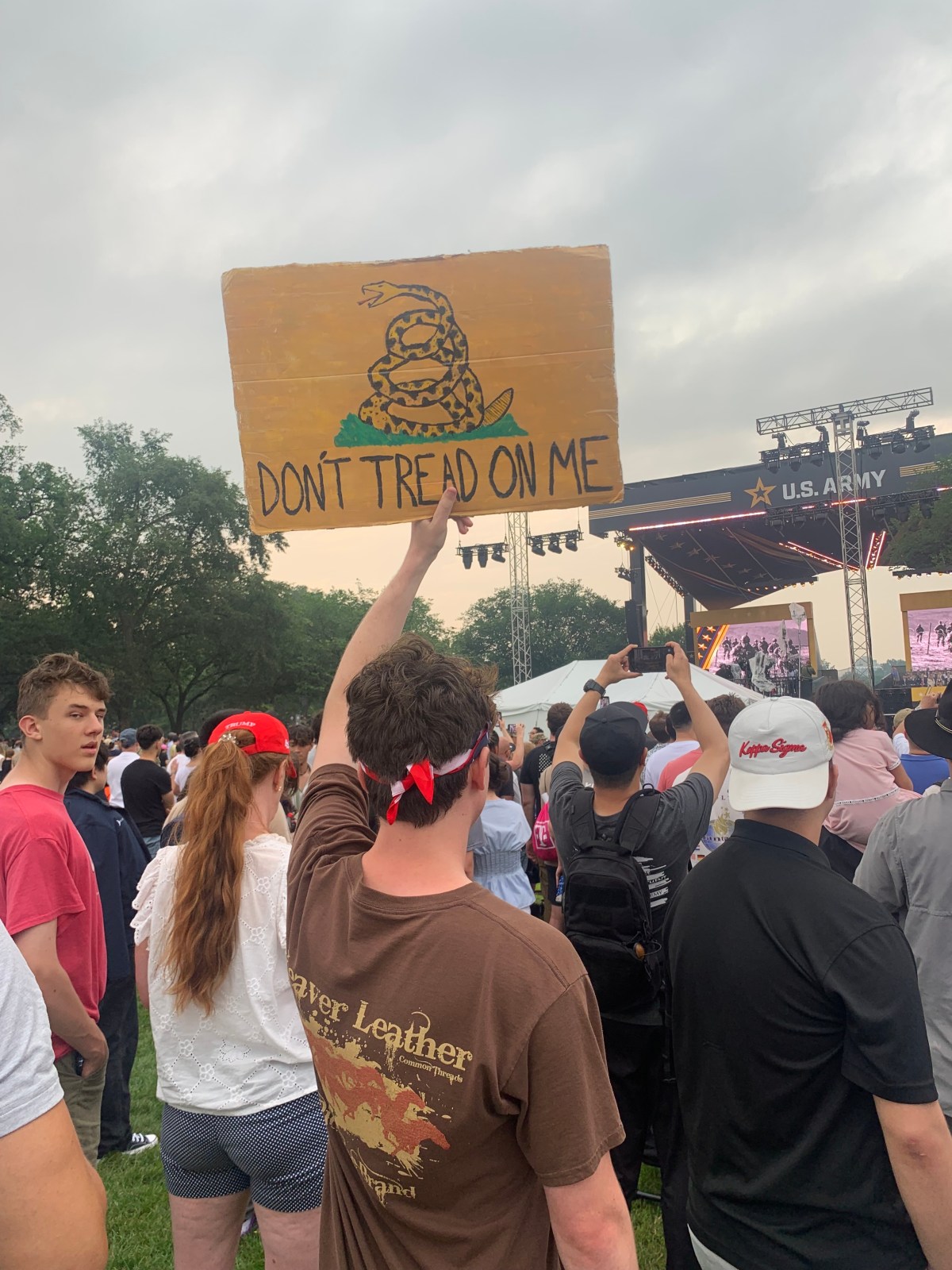
WASHINGTON, D.C.—Washingtonians geared up this weekend for a potential flashpoint between opponents and supporters of Donald Trump: a large military parade marking the 250th anniversary of the U.S. Army that just so happened to fall on the same date as the U.S. president’s 79th birthday. Parade organizers predicted a crowd of 200,000 would descend on the National Mall, and many D.C. natives anticipated counter-protests, part of the nationwide “No Kings” protests that also occurred Saturday.
But parade attendance fell far short of expectations, leading to a relatively subdued and apolitical affair. Across the nation, however, millions of protesters participated in rallies against the White House and its policies, leading to a stark contrast in political energy between downtown D.C. and the rest of the country.
A military parade in Washington, D.C., has long been on Trump’s wish list, although military advisers talked him out of it during his first term. Critics of the event pointed to how seldom such parades are held in the nation’s capital—the last one was held after the U.S. victory in the first Gulf War—and the perception that the show of military might have been a pretext to celebrate the president’s birthday, as no such parades are currently planned for the 250th anniversaries of the Navy and the Marines later this year.
But Saturday’s parade didn’t resemble the military parades of countries like North Korea, Russia, or even France, which tend to feature blocks of armed soldiers in full dress and squadrons of combat vehicles. Instead, small columns of soldiers, unarmed and in fatigues, marched alongside units wearing uniforms and driving vehicles from a variety of historical U.S. conflicts ranging from the Revolutionary War to Desert Storm.
The arrangement led to some bewildering contrasts: At one point, soldiers dressed as U.S. Cavalry from the 1870s, complete with covered wagon, trotted by as P-51 Mustang fighters from World War II flew overhead.* Overlooking the parade route was a sign from one of the event’s sponsors: Coinbase, a cryptocurrency exchange.
While there were certainly many attendees donning “Make America Great Again” hats, most of the crowd on Saturday appeared to be military families, veterans, or simply tourists. And to many, politics were of secondary importance. “I’m just glad that we can all be here together, regardless of our beliefs, regardless of our opinions, and just be together without having to resort to anything unpleasant,” William Wimmer, a DMV resident, told TMD.
But politics, specifically relating to the president, were also clearly motivating factors for some. “It’s the first time we’ve been to an event like this, but we always try to come and support Trump,” said Matthew Rosan, a D.C. resident in attendance. “[But] I think mostly people are here for the Army.” John Thomas, who held a large “Trump 2024” flag, told TMD that he was at the parade to “celebrate the country and the sacrifices the troops have made.”
Many active-duty soldiers who were present, either on their own time or volunteering, simply appreciated the public support. “I’ve been getting a lot of support, a lot of ‘thank you for your service,’” said William Ford, who has served in the Army for 11 years and was passing out water to attendees. “From my vantage point, it looks like everyone’s here to celebrate the Army.”
The relatively low-key nature of the parade stood in contrast to the “No Kings” movement, which organized more than 2,000 separate protests across the country on Saturday. In New York, marchers filled multiple blocks along Fifth Avenue; in Seattle, city officials said 70,000 people showed up to protest downtown. Smaller protests were also held in locales as wide-ranging as Glendale, Arizona, West Palm Beach, Florida, and Florence, Alabama—official events were organized almost everywhere except downtown D.C., a deliberate choice by organizers. “Instead of allowing this birthday parade to be the center of gravity,” they wrote, “we will make action everywhere else the story of America that day: people coming together in communities across the country to reject strongman politics and corruption.”
The protests and law enforcement response were almost entirely peaceful, with the notable exceptions of mounted police forces briefly advancing on protesters who allegedly threw rocks and bottles in downtown Los Angeles and police using tear gas to disperse protesters who remained for hours in front of the I.C.E. building in downtown Portland, Oregon. A 39-year-old man was also shot on Saturday at a protest in Salt Lake City, Utah, and later died from his injuries, though law enforcement officials said he was not the “intended target” of the shooting. Many demonstrators donned traditional American symbols, including American flags, “Don’t Tread on Me” signs, and Statue of Liberty costumes.
Organizers also framed the protests, which were mostly in objection to Trump’s aggressive use of presidential power, as stretching back to the Revolutionary desire to cast off monarchy. “We love the United States, even with all its imperfections, because it was founded on the idea of rejecting monarchy, of saying no to concentrated, unchecked power,” actress Ilana Glazer said in a speech at New York City’s protests.
But the protests also had a markedly liberal tilt, often related to the administration's anti-immigration efforts. “I’m here to help our nation stay democratic and for families to stay together,” Andrew Gryson, a protester in Atlanta, told TMD. “Everyone should have the right to due process and the right to try to immigrate to the United States.”
The scattered, largely solitary protesters at the D.C. parade also shared these concerns. In front of the dais where Trump and White House officials sat, D.C. native Peter Sallinger stood silently holding a sign that showed the words “Don’t Tread on Me” over a rattlesnake—a traditionally libertarian symbol that he said he wanted to reclaim for liberals. “I didn’t like that we’re spending tens of millions of dollars to roll tanks through the city on the president’s birthday,” said the 22 year old. “It feels un-American.”
Today’s Must-Read
No matter how wonderful the freedom of expression is, society has legitimate interests besides maximizing speech. There is nothing shameful or antithetical to Americanism about establishing laws, norms, and expectations that keep free speech in its proper place as one important element of a free and functioning society. No freedoms, not even those enshrined in the Bill of Rights, ought to swallow the rest of American life whole. Safety against stampedes could justify limiting speech. So could a policy of not aiding enemies of the state. But what else? To what extent? And in what ways?
Toeing the Company Line
The Man Who Goes Unnoticed
Religious institutions have an important part to play in addressing the crisis of boys and men.
We Should All Hope Israel Succeeds
You don’t have to like Israel to understand why success in Iran matters for the whole region.
The Iran Hoax
Was the U.S. involved in Israel’s attack on Iran or not?
Defining Dadwork
Even when a father is toiling away in the background, he's teaching important lessons.
The Marginal Parent
Dad is often the last gallon of fuel in the parenthood tank.
Private: The Monthly Mailbag With Mike Rothman
It’s our president’s turn to answer your questions.
Fort Bragg-adocio
It’s bad for the president to engage in partisan politics in a military setting. It’s worse when service members join in.
Assessing Claims About the One Big Beautiful Bill Act
The bill does not let the president cancel elections or ignore the Supreme Court.
Israel’s Endgame In Iran
Will there be regime change in Iran?
No Discipline, All Punish
This means … war?
Worth Your Time
- In Politico, Mathias Döpfner called on the West to exercise moral clarity amid the unfolding war between Israel and the Islamic Republic of Iran. “When a society can no longer distinguish between good and evil, between victim and perpetrator, it gives up,” he wrote. “This dynamic is one of the great constants of human history. It is a lesson people in free societies—and people in totalitarian societies who yearn to be free—should keep in mind during the climactic showdown underway in the Middle East.” Israel’s attacks targeting Iranian nuclear infrastructure aren’t merely about regional security, he wrote, but also a “central front in a global contest in which the forces of tyranny and violence in recent years have been gaining ground against the forces of freedom, which too often are demoralized and divided.” Consider the regime that Israel is fighting: “In Iran, women are systematically oppressed and abused. Homosexuals are murdered. Those who think differently are imprisoned and tortured. … If the perpetrator-victim reversal that has been repeatedly observed since Oct. 7 applies even in the most obvious case—Iran—then this can only be interpreted to mean that we are in the process of losing the culture war, which in reality has long since become a war of civilizations.”
- President Donald Trump has partially backed off his plan to revoke student visas for Chinese nationals, but, writing in The Atlantic, Michael Schuman questioned whether China might have supported that policy. “Just how mad is Beijing about President Donald Trump’s decision to revoke student visas for Chinese nationals?” he asked. “Not as mad as it says, and not as mad as one might expect.” Take the reaction of China’s leader, for example: “When Chinese leader Xi Jinping spoke with Trump by phone last week, either he didn’t raise the new visa policy or his foreign ministry didn’t regard his comments on the matter worth including in its official summary of the call, which suggests that the issue is not a top priority in Beijing’s negotiations with Washington. … Xi has consistently stressed the importance of education in sustaining China’s rise,” Schuman wrote. “China would like to have its own Harvards, rather than sending its elite students to the United States, for political and cultural reasons as well as economic ones. … Within China, authorities can more easily confine students inside the government’s propaganda bubble, which in recent years has become more airtight.”
Presented Without Comment
Politico: Trump’s FAA Pick Has Claimed ‘Commercial’ Pilot License He Doesn’t Have
President Donald Trump’s nominee to head the Federal Aviation Administration long described himself in his official biography as being certified to fly aircraft commercially — but records examined by POLITICO show that he does not hold any commercial license.
Bryan Bedford’s biography at Republic Airways, the regional airline where he has been CEO since 1999, said until Thursday that he “holds commercial, multi-engine and instrument ratings.” (By Friday, after POLITICO’s inquiries, the word “commercial” had been removed.) The FAA registry that houses data on pilot’s licenses does not list any such commercial credentials for Bedford.
Also Presented Without Comment
Reuters: Trump Administration Weighs Adding 36 Countries To Travel Ban, Memo Says
Also Also Presented Without Comment
Associated Press: Spaniards Turn Water Pistols On Visitors In Barcelona And Mallorca To Protest Mass Tourism
In the Zeitgeist
Exactly 60 years ago on Sunday, Bob Dylan recorded his hit single “Like a Rolling Stone,” which reached No. 2 on the Billboard charts and has only grown more iconic in the decades since.
As Columbia Records’ Shaun Considine later recounted in a 2004 New York Times article, Dylan’s song was almost not released as a single. Record executives wanted to cut the six-minute song in half, which Dylan refused. It was only after Considine shared the song with two influential New York radio tastemakers—who, upon listening to it, swiftly called up Columbia Records—that the record label agreed to release the song as a single.
Let Us Know
Did you attend either the military parade or an anti-Trump protest this weekend?
Editor’s Note, June 16, 2025: This newsletter was updated to include additional details about the shooting in Salt Lake City over the weekend and to correct the name of the fighter-bombers flying overhead at the military parade on Saturday.









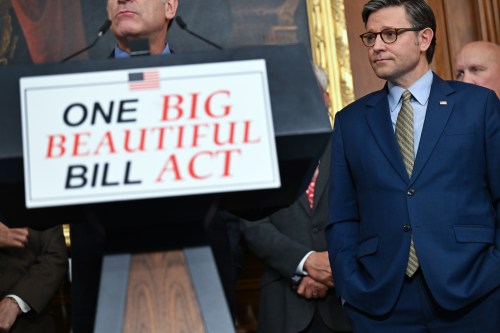
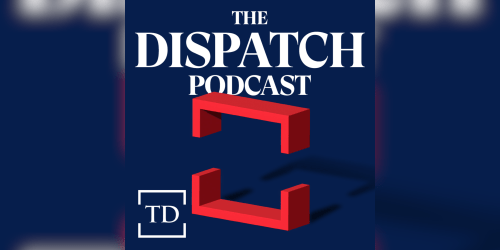
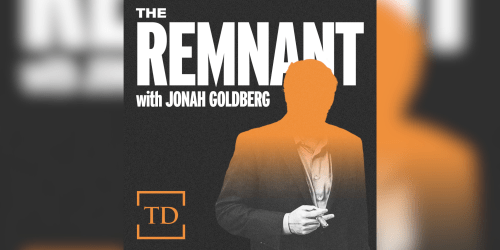







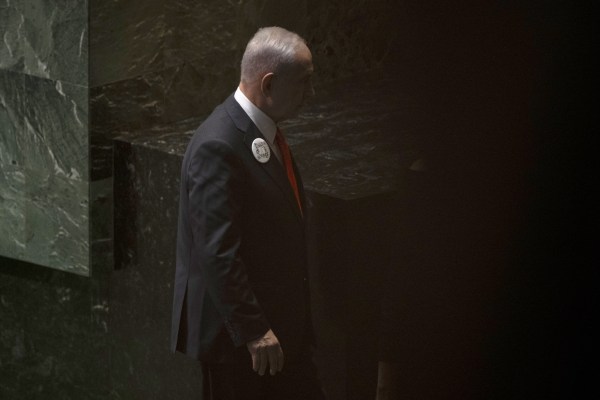
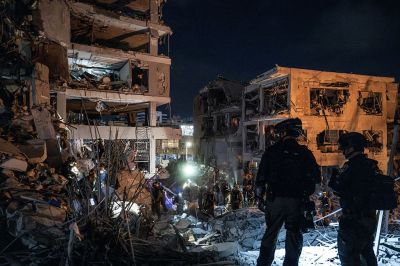
Please note that we at The Dispatch hold ourselves, our work, and our commenters to a higher standard than other places on the internet. We welcome comments that foster genuine debate or discussion—including comments critical of us or our work—but responses that include ad hominem attacks on fellow Dispatch members or are intended to stoke fear and anger may be moderated.
With your membership, you only have the ability to comment on The Morning Dispatch articles. Consider upgrading to join the conversation everywhere.